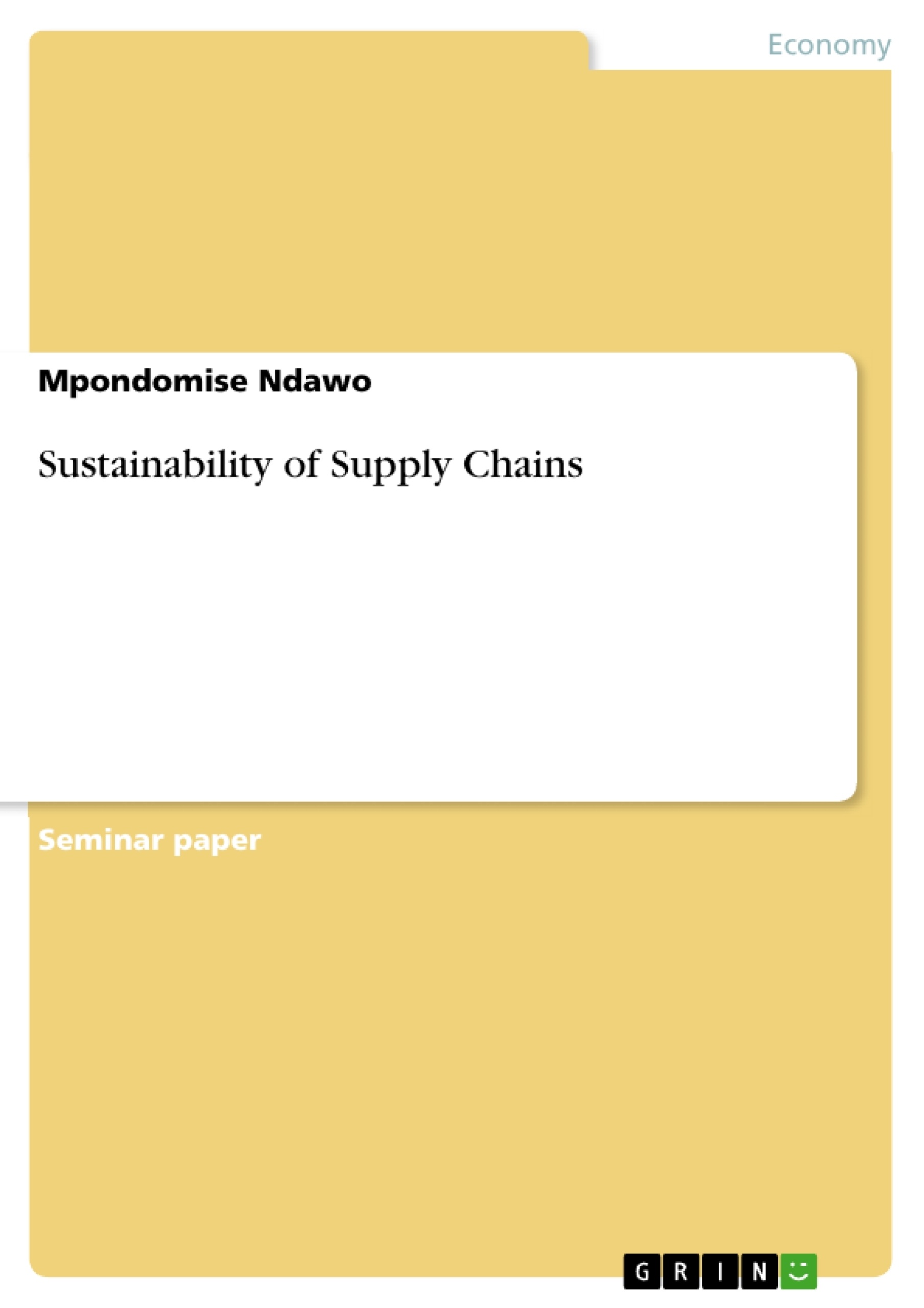Supply chain management is the integration and management of a complex network of activities involved in delivering a complete product to the end-user or customer. It is a common belief that all stages in a product life cycle will have an impact on supply chain biodiversity burden, from resource extraction, manufacturing, use and reuse, final recycling. This is based on the fact that the environmental agenda has become increasingly important for the Government of South Africa, and is slowly reflected in growing legislation to counter negative impacts on the environment. The government’s primary targets are the building, construction, and water sector; there is a belief for considerable scope for improvements. There are concerns with regards to the environment and this has led the government to also include sustainability, this covers ecology, economic, social and cultural considerations from a South African perspective.
Rand Water as a state-owned enterprise has realised the importance of sustainability issues by formulating, evaluating and verifying relevant environmental requirements in its supply chain policy for the development of its current and future products. New tenders before being issued to the market, a list of requirements are stipulated in a way that enables them to be fulfilled by the service providers and verified by Rand Water officials on submission. Rand Water is busy conducting ways to modify its project management practices to be environmentally friendly as they continue in its quest for sustainability compliance. The proposed route towards dematerialized and detoxified goods and operations can be summarized by the four R‟s: Reduce, Repair, Reuse, and Recycle.
Inhaltsverzeichnis (Table of Contents)
- Introduction
- Flow of assignment
- Background on sustainability
- Literature Review
- Supply chain strategy formulation
- Closed Loop Supply Chain Management
- Sustainable Supply Chain Management
- Sustainable thinking in the operational environment
- Sustainable development
- Drivers of sustainability
- Government legislations
- Stakeholder pressures
- Economic sustainability
- Suppliers pressure & willingness
- Comparison between Sustainability & Closed loop system
- Rand Water: Discussion
- Introduction
- Sustainable Supply Chain Strategy
- Rand Water facilities
- Sustainability initiatives
- Employees Motivation, Health & Safety
- Supply Chain risks and their drivers at Rand Water
- Contingency planning
- Recommendations
- References
Zielsetzung und Themenschwerpunkte (Objectives and Key Themes)
This assignment aims to explore the concept of sustainable supply chain management in the context of a water utility, specifically Rand Water. It analyzes the company's current approach to sustainability and identifies potential risks and drivers within its supply chain. The assignment also proposes recommendations to enhance Rand Water's sustainability efforts.
- Sustainable Supply Chain Management Practices
- Triple Bottom Line (TBL) and its application in the water industry
- Risk Assessment and Contingency Planning in Supply Chains
- Government regulations and stakeholder pressures on sustainability initiatives
- Integration of sustainability principles into supply chain strategy formulation
Zusammenfassung der Kapitel (Chapter Summaries)
The introduction provides an overview of supply chain management and its significance in the context of environmental sustainability. It highlights the growing importance of sustainable practices, particularly in the water sector, and discusses Rand Water's commitment to environmental responsibility.
The background section defines sustainability and its relevance to organizations like Rand Water. It emphasizes the need for a triple bottom line approach, integrating environmental, social, and economic considerations. The chapter also explores Rand Water's efforts to achieve sustainability through various initiatives.
The literature review section delves into different aspects of sustainable supply chain management. It examines the process of supply chain strategy formulation, the importance of aligning strategy with environmental considerations, and the concept of closed-loop supply chain management. It also highlights the drivers of sustainability, including government regulations, stakeholder pressures, and economic sustainability.
The chapter on Rand Water discusses the company's approach to sustainable supply chain management. It examines its sustainable supply chain strategy, analyzes the facilities and initiatives aimed at achieving sustainability, and outlines the company's efforts in promoting employee health and safety.
Schlüsselwörter (Keywords)
The key concepts and topics covered in this assignment include sustainable supply chain management, triple bottom line (TBL), Rand Water, risk assessment, contingency planning, government regulations, stakeholder pressures, and environmental sustainability.
- Citation du texte
- Mpondomise Ndawo (Auteur), 2016, Sustainability of Supply Chains, Munich, GRIN Verlag, https://www.grin.com/document/494199



